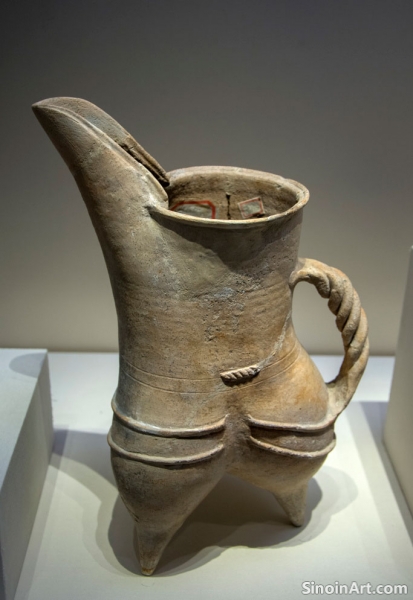Tang Dynasty Tomb Figures: A Window into the Past
|
Tang Dynasty tomb figures are an iconic form of ceramic art that provides valuable insights into the daily life, fashion, and beliefs of the era. These earthenware figurines, often decorated with sancai glazes, were placed in tombs to accompany the deceased into the afterlife. They serve as a window into a lost world.  Tomb figures were made in a variety of forms, including depictions of court ladies, officials, soldiers, musicians, dancers, and animals. These figures reveal the range of activities, clothing, and cultural practices of Tang society. They are both decorative and informative.  The detail and craftsmanship of Tang tomb figures are remarkable. The sculptors created pieces with realistic features, dynamic poses, and carefully rendered details of clothing and accessories. They are a wonderful example of the artistry of the time. Each piece shows a high level of expertise.  The use of sancai glazes on tomb figures added another layer of artistry and visual appeal. The bright colors and the flowing effect of the glaze made each figure unique. Sancai adds an extra dimension to the beauty of these pieces. The vibrant glazes made each piece stand out. The legacy of Tang tomb figures lies in their artistic beauty, their historical value, and their ability to connect us to the world of the Tang Dynasty. They are a reminder of the rich culture and artistry that flourished at the time. The artistry of the tomb figures remains highly prized. Keywords: Summary: |
Tag : Tang tomb figures, Chinese ceramics, Sancai pottery, Tang Dynasty art, Burial figures
Related information
- The Dawn of Celadon Splendor
- The Decorative Motifs of Tang Ceramics
- Tang Ceramics and Foreign Trade
- The Forms of Tang Ceramics: Function and Artistry
- Tang Ceramics and the Tea Ceremony
The Tang Dynasty (618-907 AD) represents a crucial period in the history of Chinese ceramics, particularly in the development and refinement of celadon wares. While not as dramatically innovative as the later Song dynasty, the Tang era saw a significant leap in kiln technology, material preparation, and artistic understanding that laid the groundwork for future ceramic masterpieces. Celadon, with its subtle green hues reminiscent of jade, enjoyed immense popularity, favored by both the imperial court and the burgeoning merchant class. Tang celadon wasn't just about mimicking jade; it was about capturing the essence of natural beauty and the philosophical ideals of the time.
The decorative motifs found on Tang Dynasty ceramics are rich and varied, reflecting the diverse cultural influences and artistic trends of the era. These motifs, ranging from simple geometric patterns to complex figural depictions, not only enhance the aesthetic appeal of the wares but also provide insights into Tang beliefs, values, and artistic tastes.
The Tang Dynasty's open trade policies and the prominence of the Silk Road facilitated the widespread distribution of Tang ceramics to foreign lands. These ceramic wares, renowned for their beauty and quality, became valuable commodities in international trade, bringing Tang artistry and craftsmanship to distant corners of the world. The impact of this trade was significant, not only economically but also culturally.
Tang Dynasty ceramics feature diverse forms ranging from elegant ewers and sancai tomb figures to robust storage jars and architectural elements, showcasing the intersection of function, artistry, and the diverse needs of the era.
While not as central as in later periods, the tea ceremony was beginning to gain popularity during the Tang Dynasty, and this had a subtle but significant impact on ceramic production. The growing appreciation for tea and the rituals surrounding its consumption influenced the development of specific ceramic forms and styles. The Tang tea culture, while not as formalized as in later dynasties, laid the groundwork for the widespread use of ceramics in tea service.